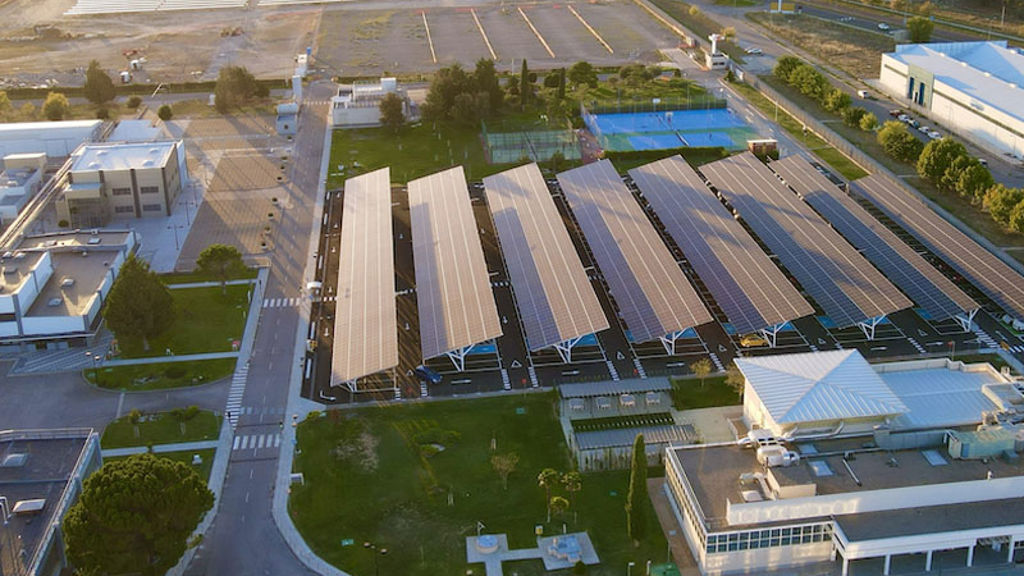Incorporating green wind energy into healthcare provider DePuy Synthes’ Cork site
Wind energy at DePuy Synthes

To drive greater efficiency and sustainability, manufacturing companies are exploring wind turbines as a key renewable energy source. Medical device manufacturer DePuy Synthes, part of the Johnson & Johnson, has been working to embed sustainability at the heart of its operations to power all facilities from renewable energy by 2050.
After successfully incorporating wind energy at its Cork site in 2014 – the first global Johnson & Johnson site to install a wind turbine – DePuy Synthes appointed Arup to advise on the feasibility of a second turbine at its nearby Loughbeg facility. Generating more than 32 million kilowatt-hours, DePuy Synthes’ initial turbine provides 35% of the site’s total electricity consumption, offsetting 14,000 tonnes of CO2.
Helping DePuy Synthes to achieve its reduced carbon emissions aspirations and deliver energy savings at its second facility in Cork, Arup’s environmental and health and safety consultants, alongside engineers, investigated the site and recommended a suitable turbine location in line with the engineering, safety and environmental constraints. Building on this successful collaboration, Arup is working to explore the renewable energy solution installations at other Ireland sites.
Securing planning permission in a complex site
Ensuring that industrial wind energy projects deliver the best possible results requires careful planning in accordance with regulatory approvals. Arup’s planning and environmental consultants provided key technical advice on all aspects of the new turbine and prepared the planning application following consultation with all relevant bodies.
The unobtrusive operation of the existing turbines in Cork’s lower harbour was a reassurance to members of the public and the planning authority, and planning permission for the Loughbeg turbine was granted.
Arup completed the Commission for Regulation of Utilities (CRU) application for licences to construct the wind turbines and generate energy. We successfully secured these licences, a statutory requirement before a generator of this size is connected to the grid.
As the world’s largest, most broadly based healthcare company, we know that human health and environmental health are fundamentally linked – healthy people need a healthy planet. Installing wind turbines was a vital step on our journey towards achieving our climate goals, as well as contributing to our competitiveness through savings in energy costs.
Dónal Óg Cusack
Senior Engineering Manager, DePuy Synthes
Collaboration key to successful installation
The delivery phase of the project commenced in early 2018. Close collaboration with the client, management contractor, wind turbine vendor and other specialists was essential to deliver DePuy’s Loughbeg turbine, becoming operational in November 2018.
Arup’s environmental consultants provided ongoing support to help DePuy Synthes achieve their sustainability objectives, including ecological monitoring and reporting to relevant authorities.
Arup’s civil engineers designed key balance of plant items, including the underground cable duct runs from the transformer at the base of the turbine tower to the adjacent production building.
To deliver the large turbine components, our specialists analysed the swept paths and weights of the numerous haulage vehicles to determine the alignment of the temporary stone haul roads.
Arup’s electrical engineers worked closely with ten specialists to deliver the electrical balance of plant installation, including designing the underground and overground cables to connect into the DePuy site network and the new circuit breaker’s protection setting. We also specified the Embedded Generator Interface Protection (EGIP) to ensure the correct turbine operation. This control system is required by ESB, a state-owned electricity company in Ireland, to prevent disturbances on the network.
Health and safety: mitigating potential risks on an active industrial site
Putting measures in place to avoid the potential health and safety risks was a priority. Arup’s role as Project Supervisor for the Design Process (PSDP) helped track and advise on mitigating potential risks, including protocols for major crane lifts over the adjacent facility.
As it was a busy industrial site, Arup’s health and safety consultants collaborated with DePuy, the contractors and turbine vendor to create a comprehensive risk register for the design, construction and installation. With numerous manufacturing facilities located nearby, this live document was updated by all collaborators and proved vital to ensure an incident-free project.
John Sisk & Son Ltd. / Enercon / Cork County Council / Premium Power / Schneider / CRU / MA Electrical / Enersol / Grid Connect
What we delivered
-
Medical device manufacturer DePuy Synthes have been working to embed sustainability firmly at the heart of its operations.
-
Arup were appointed to advise on the feasibility of a second 150m turbine at its nearby Loughbeg facility, after a successful installation in nearby Cork.
-
Arup’s engineers and consultants investigated the site and recommended suitable locations for the turbine in line with environmental constraints.
-
Submarkets
-
Services used
Get in touch with our team
Projects
Explore more renewable energy projects

Accelerating the development of global offshore wind infrastructure s
Offshore wind farms

Advising GSK on the design of a highly efficient photovoltaic plant
GSK photovoltaic plant in northern Spain, Spain

Early-stage advice on the foundation design for a Scotland offshore substation
Stoura Offshore Wind Farm, United Kingdom

Supporting the successful delivery of Denmark’s largest offshore wind farm
Project Thor, Denmark
Get in touch with us
If you'd like to speak to one of our energy experts about any of the issues raised on this page or a potential collaboration then please get in touch by completing the form.

